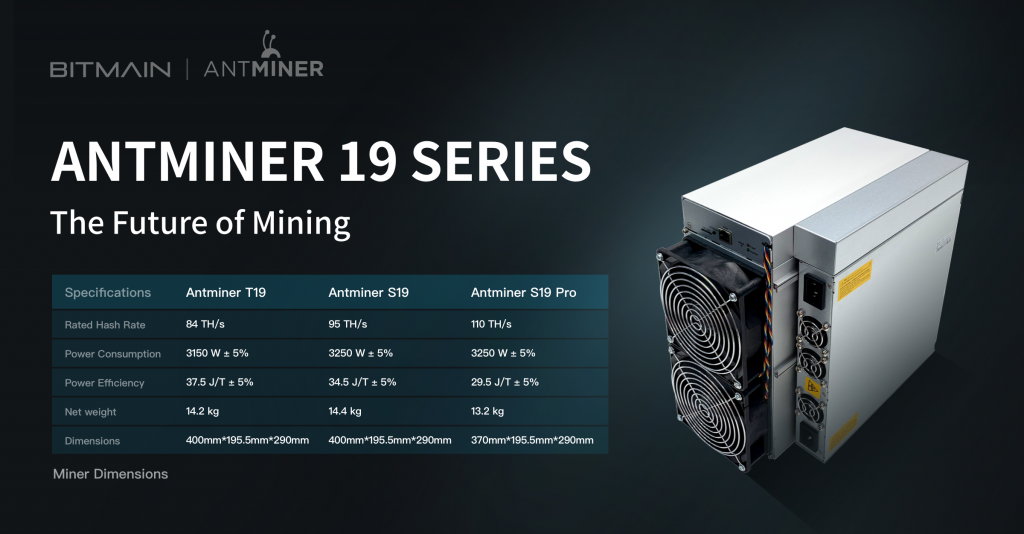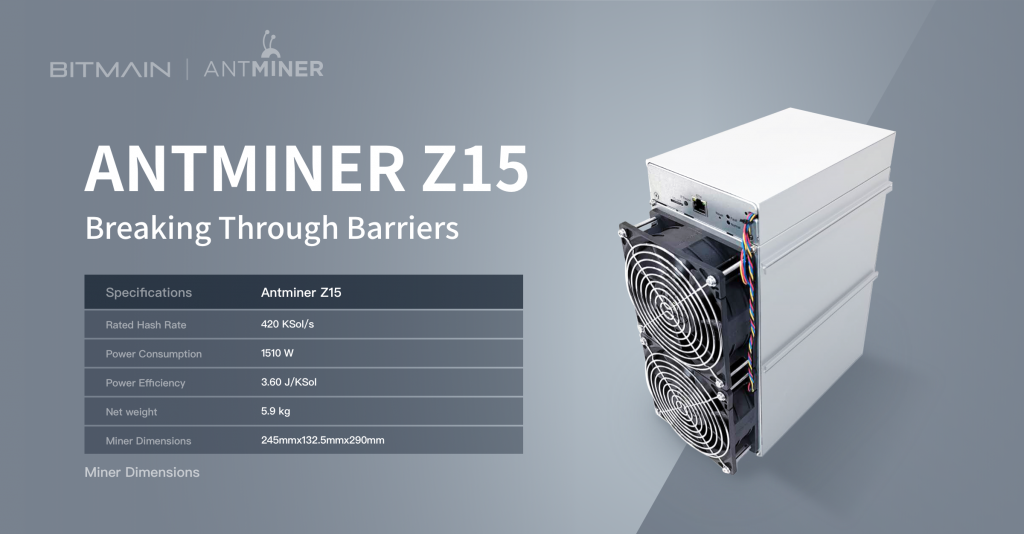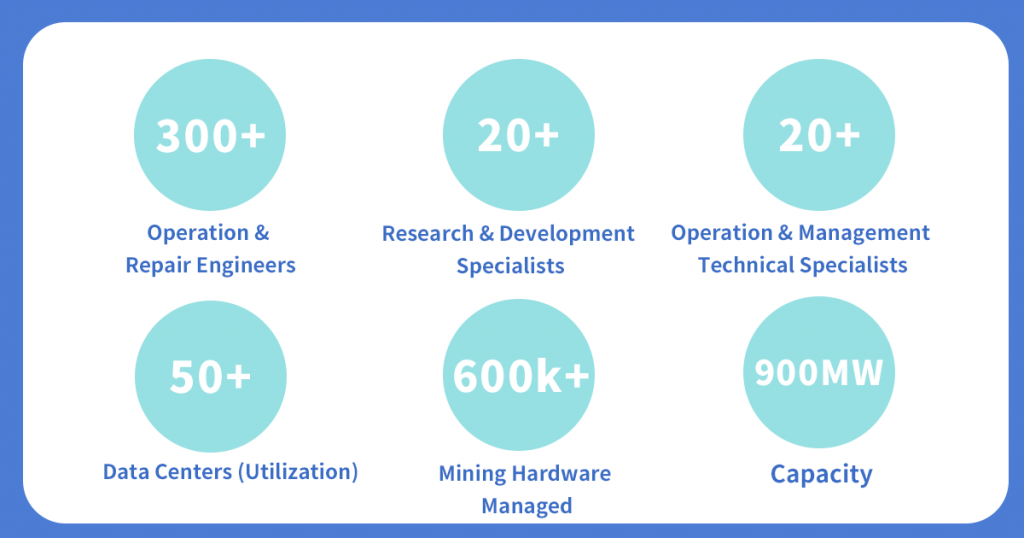A Review on Bitmain’s H1 2020
The year 2020 has seen strong turbulence in global markets and industries. In such a time of uncertainty, Bitmain continues to deepen its strengths with industry-leading chip R&D advantage, launch superior products that reset the industry standards. Meanwhile, through its leading experience and expertise, Bitmain keeps on completing its business ecosystem deployment centered on “hash rate” by launching new businesses and services in the hope to drive the development and upgrade of the entire market.
New Product to Drive Industry Standards: Breaking Record Highs Again with the Antminer 19 Series

In the past few months, Bitmain has once again proved its strong R&D capability through the launch of its record-breaking Antminer 19 Series, which delivers an impressive performance in the global market.
Antminer S19 Pro, S19
On 27 February, Bitmain officially announced the Antminer S19 and S19 Pro. Equipped with a custom-built 7nm chip from Bitmain and enhanced circuit architecture, the Antminer S19 series reset the industry standards with record-breaking power efficiency. The Antminer S19 Pro features a hash rate of 110 TH/s, and an impressive power efficiency of 29.5±%5 J/TH. The Antminer S19 is equipped with a hash rate of 95 TH/s, and power efficiency of 34.5±%5 J/TH. S19 Pro and S19 strongly proved Bitmain’s outstanding innovation capability and position as a leader in the market.
Antminer T19
On June 1st, Bitmain launched the Antminer T19, which is housed with the same generation of custom-built chips found in the Antminer S19 and S19 Pro. Utilizing the new APW12 power supply and upgraded firmware, the T19 offers faster start-up speeds for an optimized mining experience. The T19 is equipped with a hash rate of 84 TH/s ± 3% and has a power efficiency of 37.5 J/TH ± 5%. Comparing with the previous Antminer T17, the T19 greatly improves performance, allowing miners to achieve better efficiency and earnings.
Antminer Z15

On May 7th, Bitmain launched the Antminer Z15, featuring a hash rate of 420 KSol/s, and 1510 W power consumption. This is the 3rd generation of Bitmain’s Equihash algorithm miner, which is used for mining ZEC (Zcash) and other cryptocurrencies under Equihash mining. Antminer Z11 was the model with the highest hash rate in the market before Z15, which has made significant improvement on both hash rate and power efficiency.
New Deals to Support Growth Globally: Avoid Potential Shortage through Long-Term Deals
In the past few months, Bitmain has announced multiple purchase deals of millions of USD. Through these long-term deals, Bitmain has built strategic relations with customers while ensuring a stable supply cycle.
On June 27th, the leading blockchain hosting provider Core Scientific announced that it has again partnered with Bitmain to facilitate the purchase of 17,595 units of the Antminer 19 Series. Before that, Core Scientific cooperated with Bitmain to bring the very first Antminer Training Academy to North America last year.
The Nasdaq-listed cryptocurrency mining company Marathon Patent Group announced on August 14th that it has entered into a Long-Term Purchase Contract with Bitmain for the purchase of 10,500 next-generation Antminer S19 Pro ASIC Miners. It is expected that the total 13,520 Antminers will be generating 1.55 Exahash upon full installation.
On August 18th, Riot Blockchain announced a new milestone purchase of 8,000 Antminer S19 Pros from Bitmain with delivery starting January 2021 and continuing through April 2021 until the order is complete. Until then, Riot Blockchain has purchased over 20,140 Antminers from Bitmain within a year.
New Services to Raise Industry Standards: Comprehensively Improved Customer Experiences
Since the beginning of the year, Bitmain launched a series of new offerings, aiming to advance customer experience from all perspectives.
Bitmain Supercomputing Center Research Institute (BSCI)

Bitmain announced the establishment of the Bitmain Supercomputing Center Research Institute (BSCI) in April. BSCI aims to provide customers with one-stop services on supercomputing centers, from introductory consulting, investment construction, and quality upgrades. It will provide a “turnkey” service for supercomputing centers, which includes standardized design and evaluation of the center, engineering management and consulting, and operation of the supercomputing center.
Hash Guard

Earlier this year, Bitmain launched the service “Hash Guard”, to provide high-standard maintenance and repair services that set standards for the market. Originally, Hash Guard was a miner operation and repair team established by Bitmain Group in 2014. After five years of growth and development, it has formed a professional team covering miners’ operation, repair, electrical, network, and system development. With a good reputation and excellent professional ability in the industry, our service scope is now spread all over the world. In China, North America, Europe, Central Asia, and other regions, Hash Guard is operating more than 50 data centers and has managed 600,000 miners.
R2-D2
Early in 2020, Bitmain made the decision to channel efforts into the creation of the new R2-D2 branch, the brainchild of the strategic business unit at Bitmain, built to cater for the next generation of mining technology. R2-D2 is an initiative that facilitates investors in having exclusive rights to build their own Antminers. As part of the program, customers will have exclusive usage rights for one year. It works as a long-term solution aimed at growing the mining industry while evolving into the usage of multiple cryptocurrencies. This initiative has more than 40 core design team members working on it, with more than 10 years of professional experience. This development is huge for Bitmain who have been championing mining innovator since 2013.
Upgrade on Training Courses to Attract more Participants: Standardized Training System to Nurture Talents Ready for the Future
Ant Training Academy is a training service project (hereinafter referred to as “Ant Academy” or “ATA”), which was launched by Bitmain based on years of knowledge dissemination and technology inheritance and accumulation. It is the sole training institution and certification authority officially certified by Antminer.
In August, ATA announced the upgrade on its course plan, to attract more talents with more course setting options, in the hope to prepare more qualified professional staff for the industry.
Currently, the core course of ATA is maintenance training, with the upgrade presently including the 19 Series training program. Also, it now has two options in terms of training periods –a long-term training program lasting two weeks, and a short-term training program lasting five days only – each class now scaled down to eight participants, with the option of elective courses to match the needs of different groups. Successful course participants will qualify for a “Certificate of Accomplishment”, which will include an assessment of their skill level.
Only those who sit through the night could embrace the first ray of sunshine. Bitmain will keep on the Hashrate-centered strategy to advance the evolution of the entire industry and keep on forging ahead to explore more possibilities.
---------------------Liked this article? Share it with others:
Follow Us for Latest News & Articles:


 Reuben Yap is a strong online privacy advocate and cryptocurrency enthusiast and is the co-founder of
Reuben Yap is a strong online privacy advocate and cryptocurrency enthusiast and is the co-founder of 